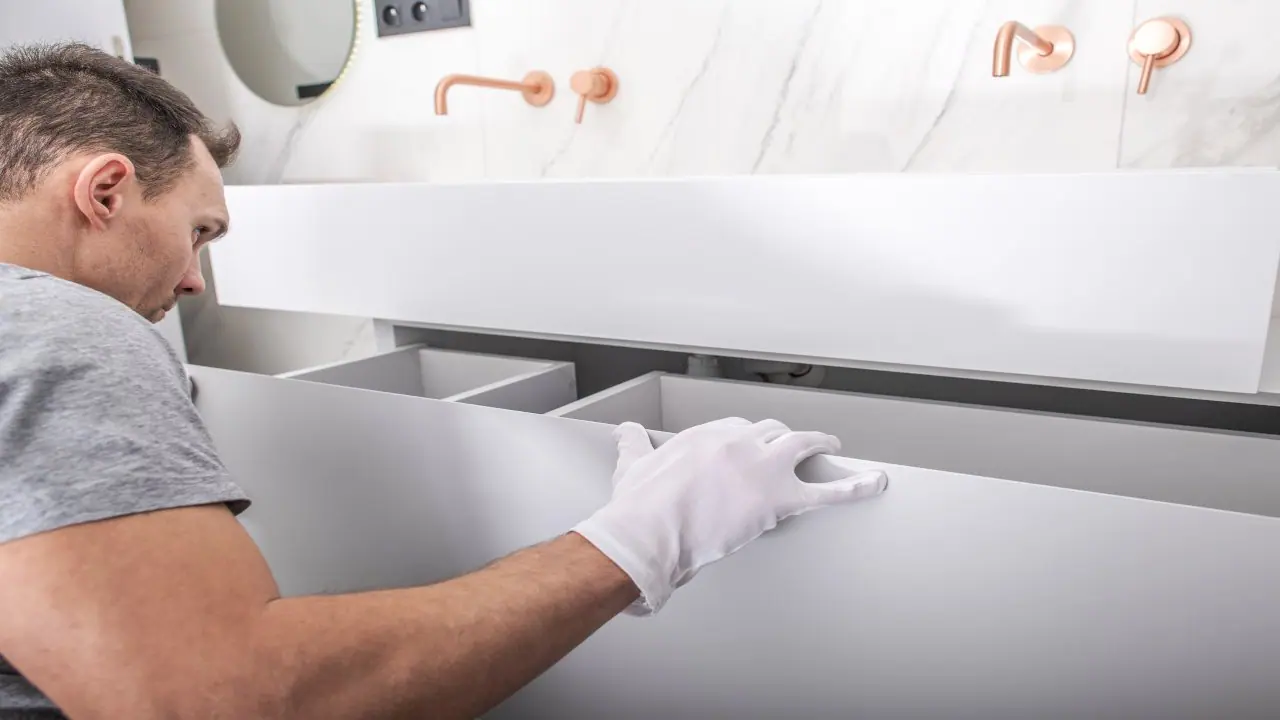
After buying a vanity to install in your newly renovated bathroom or replace your old one, you always have a choice. If you’re a first-timer with no skills and tools, you may benefit most by leaving the process to someone experienced. By hiring a professional, you can save yourself from rookie bathroom vanity installation mistakes and get it done faster – but for a fee.
However, if you’re a jack of all trades and think you can tackle the task, consider doing it on your own. The prices to install bathroom vanity cabinets vary from contractor to contractor, albeit they’re ever-increasing. That is why a DIY approach works for many homeowners, including those who are a bit short of practical knowledge.
Nevertheless, you have to make sure you get on with the process right. Otherwise, the cost of repairs may eat away at your budget – not to mention how daunting it may be to undo things.
Installing a bathroom vanity cabinet in a few simple steps
If you have an old vanity, start off by removing it. To do so, you will need to find your water shut-off valves, turn them off, and disconnect the plumbing. In most cases, supply lines are located beneath a sink. Once you shut them off, grab a wrench to remove them.
Next, get to the sealant. You’ll also have to remove it along your walls before taking out the countertop. Once done, release the sink and then loosen the screws on the back of the structure. Use a screwdriver for this until your vanity is ready to be detached. If you have quite a bulky one, ask someone to give you a hand when taking it out.
Now that you’ve got rid of your old structure, you can proceed with a new one. To nail the process, follow these bathroom vanity installation tips:
- Put your new vanity against the wall and make sure it is cut out for the plumbing on the back. If it’s not, you’ll need to make the holes yourself.
- Measure whether it sits uniformly or requires some shims. Neglecting to use a level is one of the most common bathroom vanity installation mistakes that may undermine your comfort in the future.
- Locate your studs. It can be easier to do if you’ve just disconnected your old vanity and know where it has been attached to the wall. Or you can use a stud detector.
- Drill a few holes on the back of your vanity and prop it up based on where you’ve indicated your studs are. Take the screws it comes with and use them to fasten it to the wall.
- When it’s aligned and level, caulk the edges and set the top in place. It won’t hurt to apply a little bit of clamping pressure without further ado.
- After installing a bathroom vanity cabinet, re-attach the previously disconnected plumbing. Slowly turn on your faucet to make sure no water leaks out of the supply fixtures.
If you’re a newbie DIYer, you better make time for the job on the weekend not to be in a hurry. Follow these steps to do everything right and avoid bearing the cost to install a bathroom vanity set by professionals.
M. Can Semiz
Engineer
06/01/2020,USA